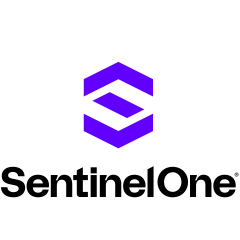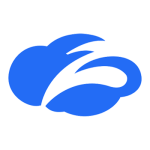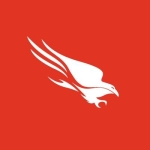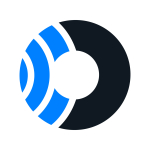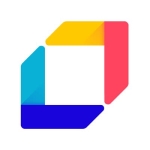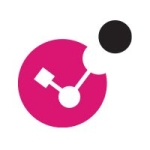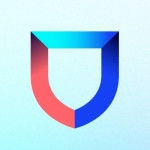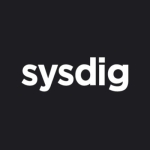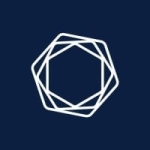What is our primary use case?
We have an environment in the cloud where we have a bunch of EC2 instances and S3 buckets. We have the SentinelOne agent installed on all of our EC2 instances, to monitor our environment, so we use it quite frequently.
We needed cloud-based endpoint protection that we could install to get a single pane of glass into our security environment. Specifically, we needed to see the version usage of the applications to ensure we didn't have any outdated applications.
How has it helped my organization?
It has definitely helped reduce our mean time to detect. It's much quicker than with our last platform. Singularity has also helped free up our staff to work on other projects. We don't usually come into the console unless we get an alert. In that sense, we have been working on many other projects in the last year. Now that everything is set up and running smoothly, we haven't had to spend as much time in the console as before.
And when I consider the solution's impact on overall productivity, features such as the reporting have helped. When we need to run a report on how many endpoints we have in our environment for regulatory requirements, we use the reporting feature of Singularity because we know it's installed on every endpoint, giving us full visibility. From a reporting standpoint, it has certainly helped us.
What is most valuable?
We really appreciate the Slack integration. When we have an incident, we get an instant notification. We also use Joe Sandbox, which Singularity can integrate with, so we can verify if a threat is legitimate. The third feature we use most often is the VirusTotal integration. That allows us to take the hash of a threat or virus and open it up in VirusTotal.
Also, it's amazing how quickly its real-time detection and response capabilities come through. There have been multiple times where either my coworker or I will be working on something—even in our elevated environment, and even just running a script. We wouldn't expect a pop-up, but it's good to know that it's checking for those anomalies, detecting them, and notifying us of them instantly. We love that feature.
In terms of the historical data record provided by Singularity after an attack, we like to use the Storyline feature for deep dives and threat hunting if needed. It has been very useful in our operations. We can see different event types on each endpoint, which comes in handy. Using the Storyline feature, we can dig in much quicker, connect the dots, and see what caused the alert. So it has quickened remediation.
And the SentinelOne Cloud engine detection types are useful when trying to determine whether a threat could be legitimate or a false positive.
What needs improvement?
One of our use cases was setting up a firewall for our endpoints, specifically for our remote users. We have a firewall on-premises that comes into play when someone is at our main campus. But we needed something more for our remote users. We were hoping to utilize SentinelOne's firewall capabilities, but there were limitations on how many URLs we could implement. Because of those limitations on the number of URLs, we weren't able to utilize that feature in the way we had hoped to.
For how long have I used the solution?
I have been using SentinelOne Singularity Cloud for about two years.
What do I think about the stability of the solution?
Singularity has been very stable. It has never lagged or crashed that I've noticed. In my experience, there has been 100 percent uptime.
The interoperability with AWS has been very straightforward and streamlined, without any major bugs or issues that I've come across.
What do I think about the scalability of the solution?
Its scalability is one of the main reasons we chose SentinelOne. Because it's hosted in the cloud, we can install as many agents as we're licensed for. We've never gone over that limit. As new servers and endpoints come online, it's easy to deploy. It's built into the image.
We do have a unique use case regarding scalability. We use a VDI environment in Azure, and it works. We haven't had any issues. But when we need to run updates on those machines, we have to rebuild the image. We can't have the agent built into the image because of our rebuild process. That makes it a manual process for us every month when we redeploy those desktops. We have it scripted out with a PowerShell script that helps, but it's a manual step for us. That's one area we're trying to address from a scalability standpoint.
As for auto-scaling, we're more of a static environment for most of our endpoints. The VDI is our only more fluid environment, since our VDI endpoints go up and down based on usage. Once the agent has been deployed to those images, the auto-scaling works flawlessly, and we haven't had any issues there.
Which solution did I use previously and why did I switch?
We used ESET, but the decision to go with Singularity was made before my time with the company.
How was the initial setup?
We have a couple different deployments: our end-user endpoints and our server fleet. I was involved with the server deployment. It was very straightforward, and we didn't run into any issues during that deployment.
The only maintenance involved is when we need to whitelist an application. For example, if a new user installs an application, we might get a false-positive pop-up. That's really the only maintenance we have to do.
What about the implementation team?
We did it ourselves, and there were four people involved.
What's my experience with pricing, setup cost, and licensing?
It's a fair price for what you get. We are happy with the price as it stands.
What other advice do I have?
My advice is that if you want an easy-to-deploy solution where you can have a single pane of glass to get visibility into all of your endpoints and applications, and run reports on those application versions, Singularity makes it a very easy-to-use, straightforward, and streamlined process that has helped us over and over again.
If someone thinks they don't need Singularity because they already have a continuous security monitoring solution in place, using SentinelOne gives us an overarching view from the single console, giving us the entire picture of the timeline of events that happened. Going through the timeline and connecting those dots really helps when threat hunting. It helps to get the full picture instead of just a specific point in time, which is the way some of the legacy antivirus programs work.
The solution has an automated remediation feature, but we don't currently use it because we are a smaller team. We like to remediate manually. For the time being, we haven't had a reason to use the automation feature yet.
One area we're trying to innovate more in is the AWS Security Hub. Singularity, in their marketplace, has a couple of apps related to that. We're trying to build more automations within AWS Security Hub to get better overall visibility, not only of our EC2 endpoints but of our applications as well.
Disclosure: PeerSpot contacted the reviewer to collect the review and to validate authenticity. The reviewer was referred by the vendor, but the review is not subject to editing or approval by the vendor.

